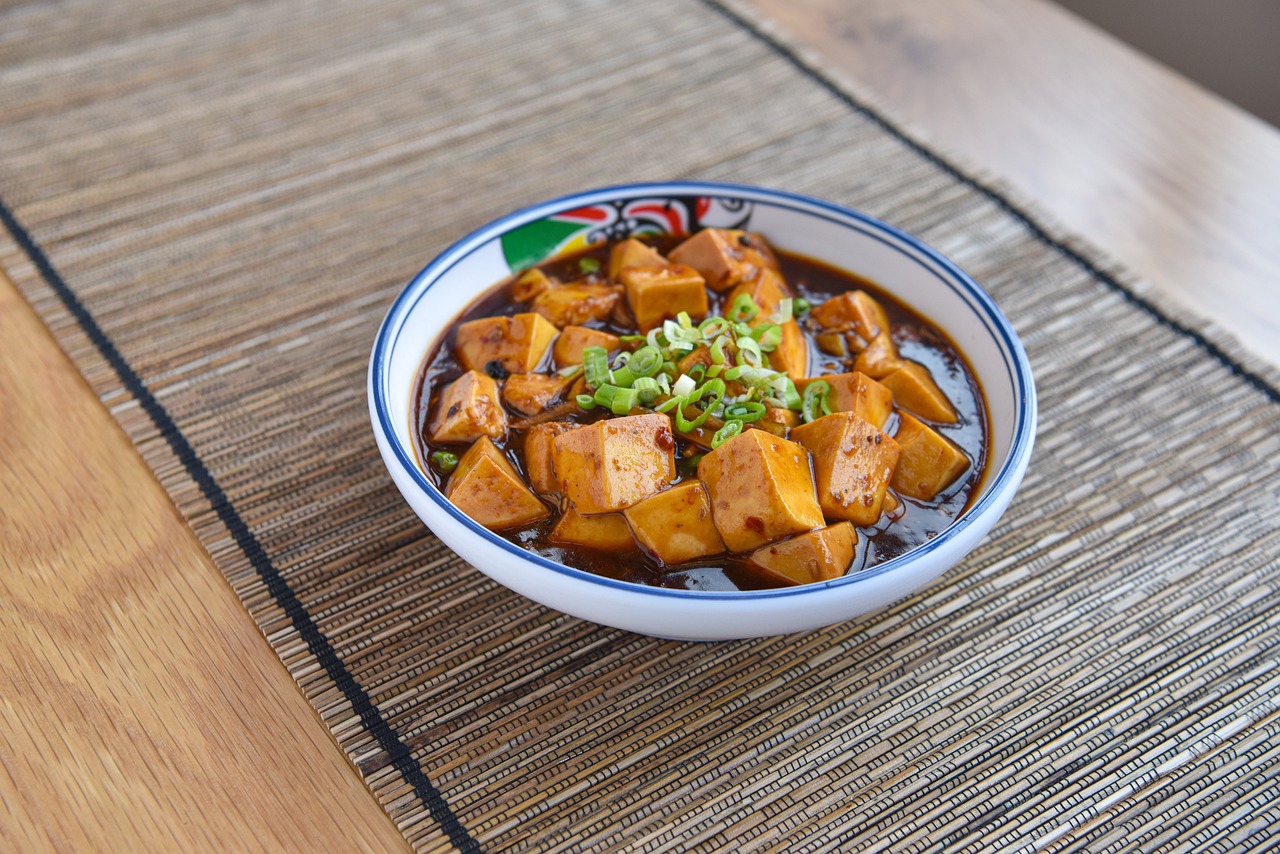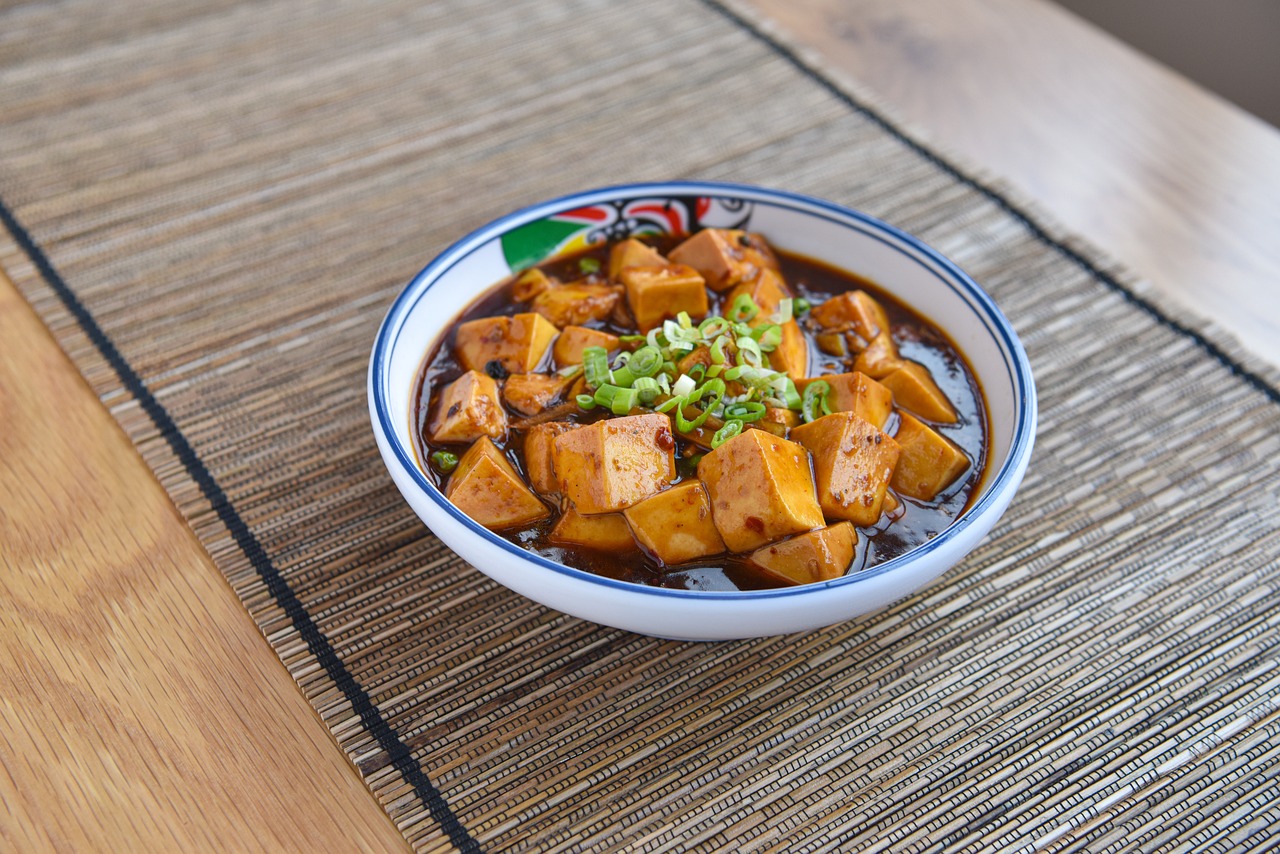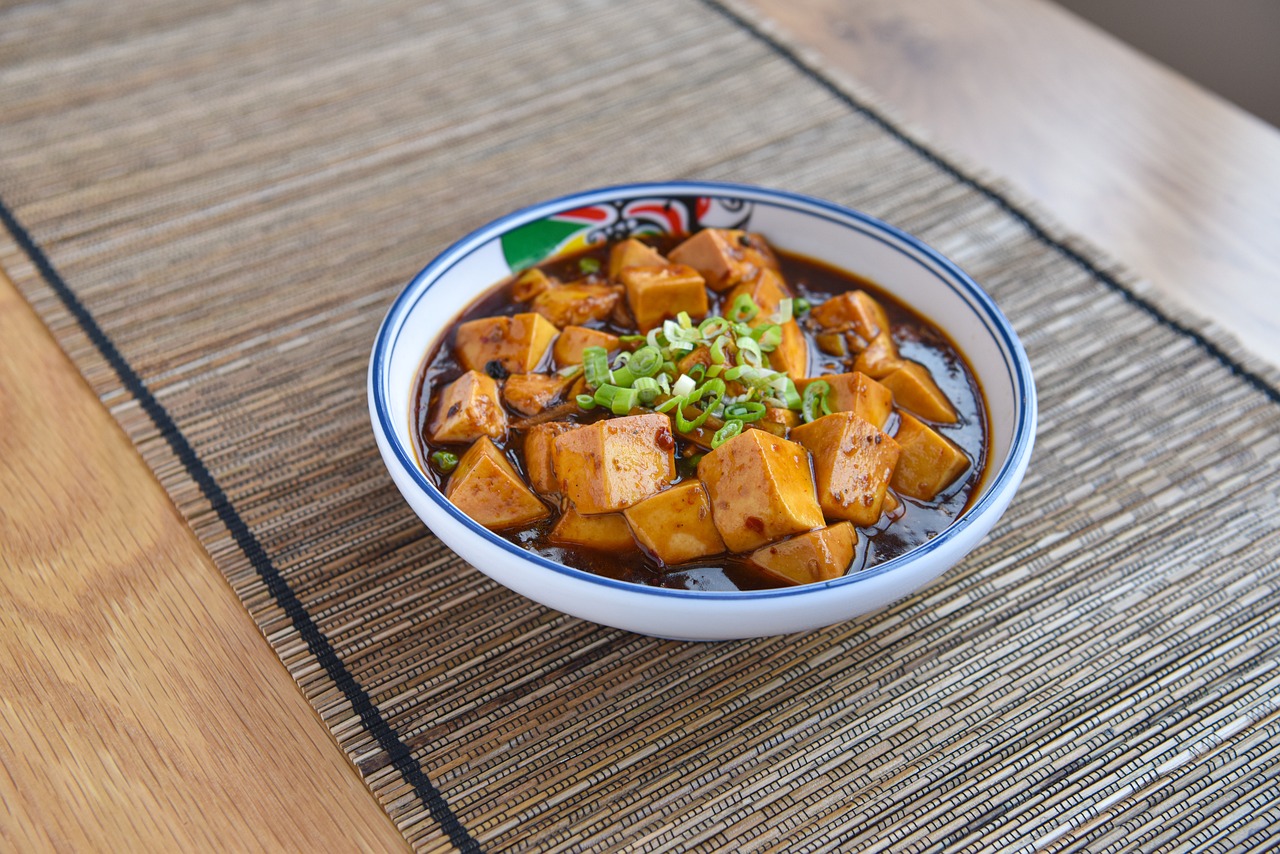Mapo Tofu: Spicy and Satisfying Chinese Tofu Dish

Mapo Tofu is a fiery and flavorful Chinese dish that has captured the hearts and taste buds of food enthusiasts around the world. This iconic dish is known for its bold spiciness and satisfying combination of ingredients that create a harmonious explosion of flavors in every bite.
Origin and History of Mapo Tofu
Mapo Tofu, a spicy and satisfying Chinese tofu dish, has a rich history that dates back to the Sichuan province in China. The origins of Mapo Tofu can be traced to the Qing Dynasty, where it was created by a pockmarked elderly woman, known as "Mapo." Legend has it that her dish became incredibly popular due to its bold flavors and unique combination of ingredients.
The name "Mapo Tofu" itself reflects the dish's creator, with "Ma" meaning pockmarked and "Po" meaning elderly woman in Chinese. Over the years, Mapo Tofu has evolved into a beloved and iconic dish in Chinese cuisine, known for its fiery spiciness and numbing sensation from Sichuan peppercorns.
Originally designed to be a simple peasant dish, Mapo Tofu has transcended its humble beginnings to become a staple in Chinese households and restaurants worldwide. Its history is steeped in tradition and innovation, with each region adding its own unique twist to the classic recipe.
Key Ingredients in Mapo Tofu
When it comes to creating the iconic and flavorful Mapo Tofu, the key ingredients play a crucial role in defining its unique taste and aroma. Let's delve into the essential components that come together to make this dish a spicy and satisfying delight:
- Tofu: The star of the dish, tofu provides a soft and creamy texture that perfectly absorbs the bold flavors of the sauce.
- Minced Meat: Typically made with ground pork or beef, the minced meat adds a savory depth to the dish, complementing the spiciness of the sauce.
- Fermented Black Beans: These umami-rich beans bring a complex and salty flavor to the dish, enhancing its overall taste profile.
- Sichuan Peppercorns: Known for their unique numbing and tingling sensation, Sichuan peppercorns add a distinct kick to Mapo Tofu, creating a symphony of flavors on the palate.
- Spicy Chili Bean Paste: A key ingredient that provides the dish with its signature heat and depth of flavor, the spicy chili bean paste is essential for achieving the fiery essence of Mapo Tofu.
Combining these key ingredients in the right proportions is the secret to achieving the perfect balance of flavors in Mapo Tofu. Each component contributes its own unique characteristics, resulting in a harmonious blend that tantalizes the taste buds and leaves a lasting impression.
Preparation and Cooking Techniques
When it comes to preparing and cooking Mapo Tofu, there are traditional methods that have been passed down through generations, as well as modern variations that cater to different preferences. The key to achieving the perfect Mapo Tofu lies in the balance of flavors and textures, with a fiery kick from the chili bean paste and a numbing sensation from the Sichuan peppercorns.
One crucial step in making Mapo Tofu is preparing the tofu. It's essential to use silken tofu for its delicate texture that contrasts beautifully with the bold flavors of the dish. The tofu should be cut into cubes gently to prevent it from breaking apart during cooking.
The minced meat used in Mapo Tofu, typically pork or beef, is another vital component that adds richness and depth to the dish. The meat is usually cooked first to render its fat and flavor before adding the other ingredients.
Creating the signature sauce for Mapo Tofu involves a combination of spicy chili bean paste, fermented black beans, and Sichuan peppercorns. The chili bean paste provides heat, while the fermented black beans contribute a unique umami flavor. The Sichuan peppercorns add a tingling numbness that is characteristic of Sichuan cuisine.
For those who prefer a milder version of Mapo Tofu, reducing the amount of chili bean paste and Sichuan peppercorns can help tone down the spiciness and numbing effect. However, adjusting these ingredients should be done carefully to maintain the dish's authentic taste.
Some variations of Mapo Tofu include adding vegetables like bell peppers or mushrooms to enhance the dish's nutritional value and texture. These additions can complement the flavors of the sauce while providing a contrast in colors and tastes.
To achieve the perfect balance of flavors in Mapo Tofu, it's crucial to taste and adjust the seasoning throughout the cooking process. Adding a touch of soy sauce or sugar can help round out the flavors and bring all the ingredients together harmoniously.
Overall, mastering the preparation and cooking techniques of Mapo Tofu requires practice, patience, and a willingness to experiment with different ingredient proportions to suit individual preferences. Whether following a traditional recipe or putting a modern spin on this classic dish, the key is to embrace the bold flavors and fiery spirit that define Mapo Tofu.
Variations and Regional Adaptations
When it comes to Mapo Tofu, the dish has seen various interpretations and adaptations across different regions, each adding its own unique twist while staying true to the dish's fiery and flavorful essence. Let's take a closer look at some of the most notable variations and regional adaptations of this beloved Chinese tofu dish:
- Sichuan Province: As the birthplace of Mapo Tofu, Sichuan province offers the most authentic and traditional version of the dish. Known for its bold and spicy flavors, Sichuan Mapo Tofu often features a generous amount of Sichuan peppercorns, creating a numbing sensation that sets it apart.
- Shanghai Style: In Shanghai, Mapo Tofu takes on a milder flavor profile compared to its Sichuan counterpart. The dish may include a touch of sweetness, and the spiciness is often toned down to cater to local preferences.
- Cantonese Variation: Cantonese-style Mapo Tofu is characterized by a lighter and more delicate sauce. It may incorporate additional ingredients like mushrooms or bamboo shoots to enhance the overall texture and flavor.
- Vegetarian Options: For those looking for a meat-free alternative, vegetarian Mapo Tofu substitutes the minced meat with ingredients like mushrooms, tofu skin, or textured vegetable protein, offering a satisfying and flavorful option for non-meat eaters.
Moreover, outside of China, Mapo Tofu has also inspired creative adaptations in various international cuisines. From Japanese Mapo Tofu with a soy sauce-based twist to Americanized versions that cater to local tastes, the dish continues to evolve and captivate taste buds around the globe.
Whether you prefer the traditional heat of Sichuan Mapo Tofu or enjoy exploring innovative variations, one thing is certain – the versatility of this dish allows for endless possibilities, making it a culinary delight that transcends borders and brings people together through a shared love of bold flavors and comforting tofu goodness.
Serving and Pairing Suggestions
When it comes to serving and pairing Mapo Tofu, there are several key considerations to enhance the dining experience. This fiery and flavorful dish can be enjoyed in various ways, either as a standalone main course or as part of a larger Chinese meal. Here are some suggestions to elevate your Mapo Tofu experience:
- Serving Suggestions:
- 1. Serve Mapo Tofu piping hot to fully appreciate its rich and spicy flavors.
- 2. Garnish with fresh chopped green onions or cilantro for a pop of color and freshness.
- 3. Accompany the dish with steamed white rice to balance out the heat and add a comforting element to the meal.
- 4. Consider serving with a side of pickled vegetables or a simple cucumber salad to provide a refreshing contrast to the bold flavors of the tofu.
When it comes to pairing Mapo Tofu with beverages, there are a few options that can complement the dish's spiciness and complexity:
- Pairing Suggestions:
- 1. Green Tea: The subtle bitterness of green tea can help cleanse the palate between bites of spicy Mapo Tofu.
- 2. Beer: A cold lager or pale ale can provide a refreshing contrast to the heat of the dish, especially if you enjoy beer with your meals.
- 3. Riesling: The slight sweetness and acidity of a Riesling wine can complement the spiciness of Mapo Tofu without overpowering it.
- 4. Ginger Beer: The spicy kick of ginger beer can mirror the heat of the dish, creating a harmonious pairing.
Experimenting with different serving and pairing options can help you discover your favorite way to enjoy Mapo Tofu. Whether you prefer traditional accompaniments or like to mix things up with unique pairings, the versatility of this classic Chinese dish ensures a delightful culinary experience with every bite.



 HazalVardal
HazalVardal 





